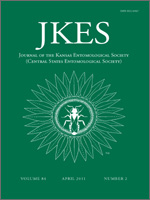The Indiana Dunes, and nearby natural areas in northwest Indiana, are floristically rich Midwest U.S. locales with many habitat types. We surveyed bees along a habitat gradient ranging from grasslands to forests in these locales, collecting at least 175 bee species along this gradient plus 29 additional species in other nearby habitats. About 25% of all species were from the genus Lasioglossum and 12% of the species were associated with sandy soils. Several bumblebee (Bombus) species of conservation concern that should occur in this region were not collected during our surveys. Similarity of the northwest Indiana bee fauna to other published U.S. faunas decreased about 1.3% per 100 km distance from northwest Indiana. Thirty percent of bees netted from flowers were males. Males and females differed significantly in their frequency of occurrence on different plant species. For bees collected in bowl traps, the percentage captured in fluorescent yellow traps declined and in fluorescent blue traps increased from spring to late summer. Capture rates for different bee genera varied temporally, with about a quarter of the genera being captured most frequently in late spring and a quarter in late summer. Capture rates for most genera were higher in more open than in more closed canopy habitats. The maximum number of plant species on which a single bee species was captured plateaued at 24, on average. Forty-nine percent of bee species known to occur in Indiana were found at these northwest Indiana sites. Having this relatively high proportion of the total Indiana bee fauna is consistent with Indiana Dunes existing at a biogeographic crossroads where grassland and forest biomes meet in a landscape whose climate and soils are affected by proximity to Lake Michigan. The resulting habitat, plant, edaphic, and climatic diversity likely produces the diverse bee community documented.
How to translate text using browser tools
1 April 2011
A Survey of Bees (Hymenoptera: Apoidea) of the Indiana Dunes and Northwest Indiana, USA
Ralph Grundel,
Robert P. Jean,
Krystalynn J. Frohnapple,
Jason Gibbs,
Gary A. Glowacki,
Noel B. Pavlovic
ACCESS THE FULL ARTICLE





